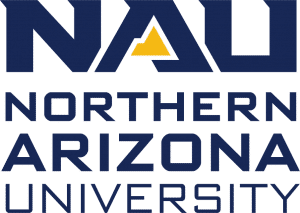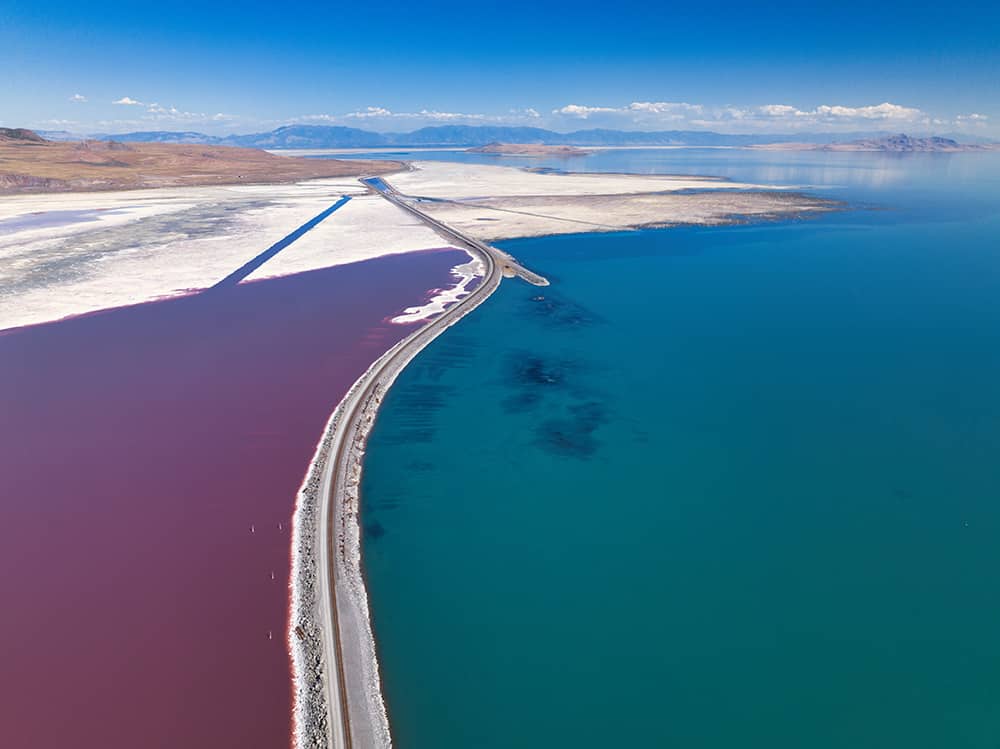The Great Salt Lake in Utah plays a perhaps surprisingly critical role in the global economy as a critical supplier to the global aquaculture industry, which means its declining levels may have adverse effects far beyond its shrinking shores.
A study, published Jan. 7 in Environmental Challenges and co-authored by two Northern Arizona University environmental data scientists, tied this depletion—15 billion cubic yards of water over the past 30 years—to human water use, largely for irrigated agriculture such as livestock feed. The study also offers solutions—including crop shifting, reducing municipal and industrial water use, and leasing water rights from irrigators – to help stabilize lake levels into the future.
The NAU team consisted of doctoral student Kat Fowler and assistant research professor Richard Rushforth, both in the School of Informatics, Computing, and Cyber Systems. This research parallels similar work by co-authored by Rushforth and the FEWSION team on the effects of water consumption to irrigate alfalfa and other cattle feed crops on streamflow depletion across the western United States, particularly for the Colorado River basin states.
“We find that water conservation offers real promise to save the Great Salt Lake,” Rushforth said. “However, for water conservation to be successful, the resulting water savings must be quantified, measured, incentivized and legally protected.”
Why the Great Salt Lake matters
The challenges created by a dwindling Great Salt Lake are multifaceted. The lake has cultural and spiritual significance to Indigenous tribes in Utah and throughout the Southwest and is a part of migration patterns for 10 million migratory birds and 350 bird species. It also plays a role in how clean the air is—or, depending on the day, isn’t—in the Salt Lake Valley, which in winter months can become a bowl of soupy, smoggy air.
“Stabilizing lake levels will have a large local impact from a public health standpoint,” Rushforth said. “Dust storms resulting from a receding Great Salt Lake are a significant air quality and public health concern for the populations surrounding the lake. Developing conservation programs to help stabilize, and potentially increase, lake levels may help reduce the challenges presented by fine particulate matter blowing off the Great Salt Lake playa.”
But the economy is also a factor. The Great Salt Lake is important to the global economy through the production of brine shrimp for the aquaculture industry and other products, including sea salt that could be in your kitchen cupboard. It directly supports 9,000 jobs and $2.5 billion in economic productivity annually, associated with mineral extraction, recreation and brine shrimp harvesting.
All of this means its average decline of 0.1 meter (almost four inches) a year for the last 30 years is worrisome. Although this is largely attributed to human consumption, it’s still a complicated problem.
- 62% of river water that in the past would have refilled the lake is diverted before reaching the lake.
- Agriculture accounts for 71% of human-induced depletions; 80% of that is for cattle-feed crops (alfalfa and grass hay) supporting almost a million head of dairy cattle.
A solution, then, is to increase the flow of water into the Great Salt Lake by reducing upstream diversions for water-intensive activities like irrigated agriculture. But that has its own economic impact for 20,000 farmers and ranchers in the Great Salt Lake Basin.
What to do next
The co-authors proposed a multi-pronged solution, starting with reducing upstream water consumption in the Great Salt Lake watershed by 35%. This will stabilize lake levels and over time allow it to refill.
One strategy to achieve this goal, the authors argue, is to develop mechanisms where farmers and ranchers are offered appropriate compensation to implement water-saving strategies that leave water in-stream to support lake levels. The study estimated that compensation for implementing water conservation measures could range from $29 to $124 per Utah resident per year. Any such solution would need to ensure that farmers and ranchers do not lose their water rights for implementing conservation practices.
“The challenges facing the implementation of strategies that support and potentially increase lake levels are complex but need to be addressed now to halt the continual decrease of the Great Salt Lake,” Rushforth said.
The National Science Foundation (NSF Grant #2115169) and the Utah Agricultural Experiment Station provided funding.

(928) 523-8737 | heidi.toth@nau.edu



